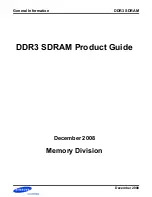
9
©2018 Integrated Device Technology, Inc
September 12, 2018
8A3xxxx Family Programming Guide
Register Table Overview
When programming an 8A3xxxx family device, it is necessary to read or write values to one or more ‘
bit-fields
’ within the device. A bit-field
provides status and/or control information on a single aspect of a single feature. A bit field may be as small as a single-bit or many bytes in
length. A bit-field should be treated as an indivisible entity and all bytes of each bit-field should be read or written in a single serial port burst.
Access to bit-fields is performed using byte-oriented addressing. A bit-field may take up multiple byte address and/or multiple bit-fields may
occupy a single byte. When there are multiple bit-fields within a single byte, all bit fields are read from or written to during an access to that
byte address over the serial port. When a bit-field spans multiple byte addresses, all bytes should be read or written in the same serial port
burst transaction to ensure consistency. For bit-fields spanning multiple bytes, the least-significant bits of that bit-field are contained in the byte
with the lowest address.
Bit-fields are grouped into
registers
and registers are in turn grouped into
modules
. In the documentation that follows, bit-fields are shown
mapped into register bytes in a table called a
Bit-Field Location
table. The function of each bit-field is shown in an associated
Bit-Field
Description
table. One or more bit-fields are grouped into a register. Registers show an address offset for each byte within that register.










































